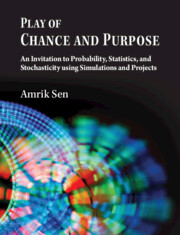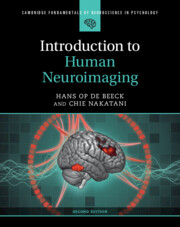Refine search
Actions for selected content:
37953 results in Cambridge Textbooks
2 - Transistor Amplifiers
-
- Book:
- Fundamentals of Analog Electronic Circuits
- Published online:
- 08 October 2025
- Print publication:
- 31 December 2025, pp 63-122
-
- Chapter
- Export citation
2 - The Climate Question and Sustainable Development
-
- Book:
- Green Energy and Sustainable Development
- Published online:
- 30 November 2025
- Print publication:
- 31 December 2025, pp 11-36
-
- Chapter
- Export citation
3 - Energy and Sustainable Development Goals
-
- Book:
- Green Energy and Sustainable Development
- Published online:
- 30 November 2025
- Print publication:
- 31 December 2025, pp 37-54
-
- Chapter
- Export citation
Index
-
- Book:
- Fundamentals of Analog Electronic Circuits
- Published online:
- 08 October 2025
- Print publication:
- 31 December 2025, pp 611-621
-
- Chapter
- Export citation
8 - Developing Sustainable Organizations: A Case Study
-
- Book:
- Green Energy and Sustainable Development
- Published online:
- 30 November 2025
- Print publication:
- 31 December 2025, pp 183-200
-
- Chapter
- Export citation
5 - Solar Energy: Green and Renewable Source of Energy
-
- Book:
- Green Energy and Sustainable Development
- Published online:
- 30 November 2025
- Print publication:
- 31 December 2025, pp 83-122
-
- Chapter
- Export citation
7 - Current Mirrors and Differential Amplifiers
-
- Book:
- Fundamentals of Analog Electronic Circuits
- Published online:
- 08 October 2025
- Print publication:
- 31 December 2025, pp 323-390
-
- Chapter
- Export citation

Play of Chance and Purpose
- An Invitation to Probability, Statistics, and Stochasticity Using Simulations and Projects
- Coming soon
-
- Expected online publication date:
- December 2025
- Print publication:
- 30 September 2025
-
- Textbook
- Export citation

Basic Electronics for Scientists and Engineers
-
- Published online:
- 23 December 2025
- Print publication:
- 20 November 2025
-
- Textbook
- Export citation

Politics and International Law
- Making, Breaking, and Upholding Global Rules
-
- Published online:
- 23 December 2025
- Print publication:
- 22 January 2026
-
- Textbook
- Export citation

Introduction to Human Neuroimaging
-
- Published online:
- 23 December 2025
- Print publication:
- 16 October 2025
-
- Textbook
- Export citation

Historical Sociolinguistics
-
- Published online:
- 19 December 2025
- Print publication:
- 08 January 2026
-
- Textbook
- Export citation
Epigraph
-
- Book:
- Corporate Power and the Politics of Change
- Published online:
- 17 December 2025
- Print publication:
- 18 December 2025, pp vi-vi
-
- Chapter
- Export citation
5 - The Promises and Risks of Corporate Governing
- from Part II - The Law and the Merits
-
- Book:
- Corporate Power and the Politics of Change
- Published online:
- 17 December 2025
- Print publication:
- 18 December 2025, pp 147-176
-
- Chapter
- Export citation
Summary of Contents
-
- Book:
- Corporate Power and the Politics of Change
- Published online:
- 17 December 2025
- Print publication:
- 18 December 2025, pp vii-viii
-
- Chapter
- Export citation
6 - Corporate Governance Safeguards for Sound Corporate Governing
- from Part III - The Way Forward
-
- Book:
- Corporate Power and the Politics of Change
- Published online:
- 17 December 2025
- Print publication:
- 18 December 2025, pp 179-209
-
- Chapter
- Export citation
2 - Corporations as Agents of Socioeconomic Change
- from Part I - The Landscape
-
- Book:
- Corporate Power and the Politics of Change
- Published online:
- 17 December 2025
- Print publication:
- 18 December 2025, pp 68-92
-
- Chapter
- Export citation
Part I - The Landscape
-
- Book:
- Corporate Power and the Politics of Change
- Published online:
- 17 December 2025
- Print publication:
- 18 December 2025, pp 23-92
-
- Chapter
- Export citation
Conclusion
- from Part III - The Way Forward
-
- Book:
- Corporate Power and the Politics of Change
- Published online:
- 17 December 2025
- Print publication:
- 18 December 2025, pp 210-212
-
- Chapter
- Export citation
Introduction
-
- Book:
- Corporate Power and the Politics of Change
- Published online:
- 17 December 2025
- Print publication:
- 18 December 2025, pp 1-22
-
- Chapter
- Export citation
